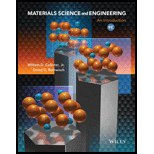
Materials Science and Engineering
9th Edition
ISBN: 9781118324578
Author: Jr. William D. Callister
Publisher: WILEY
expand_more
expand_more
format_list_bulleted
Question
Chapter 3.17, Problem 34QP
(a)
To determine
To sketch:
A cubic unit cell, and within that cell a
(b)
To determine
To sketch:
A cubic unit cell, and within that cell a
(c)
To determine
To sketch:
A cubic unit cell, and within that cell a
(d)
To determine
To sketch:
A cubic unit cell, and within that cell a
(e)
To determine
To sketch:
A cubic unit cell, and within that cell a
(f)
To determine
To sketch:
A cubic unit cell, and within that cell a
(g)
To determine
To sketch:
A cubic unit cell, and within that cell a
(h)
To determine
To sketch:
A cubic unit cell, and within that cell a
Expert Solution & Answer
Learn your wayIncludes step-by-step video

schedule09:11
Chapter 3 Solutions
Materials Science and Engineering
Ch. 3.17 - Prob. 1QPCh. 3.17 - Prob. 2QPCh. 3.17 - Prob. 3QPCh. 3.17 - Prob. 4QPCh. 3.17 - Prob. 5QPCh. 3.17 - Prob. 6QPCh. 3.17 - Prob. 7QPCh. 3.17 - Prob. 8QPCh. 3.17 - Prob. 9QPCh. 3.17 - Prob. 10QP
Ch. 3.17 - Prob. 11QPCh. 3.17 - Prob. 12QPCh. 3.17 - Prob. 13QPCh. 3.17 - Prob. 14QPCh. 3.17 - Prob. 15QPCh. 3.17 - Prob. 16QPCh. 3.17 - Prob. 17QPCh. 3.17 - Prob. 18QPCh. 3.17 - Prob. 19QPCh. 3.17 - Prob. 20QPCh. 3.17 - Prob. 21QPCh. 3.17 - Prob. 22QPCh. 3.17 - Prob. 23QPCh. 3.17 - Prob. 24QPCh. 3.17 - Prob. 25QPCh. 3.17 - Prob. 26QPCh. 3.17 - Prob. 27QPCh. 3.17 - Prob. 28QPCh. 3.17 - Prob. 29QPCh. 3.17 - Prob. 31QPCh. 3.17 - Prob. 32QPCh. 3.17 - Prob. 33QPCh. 3.17 - Prob. 34QPCh. 3.17 - Prob. 35QPCh. 3.17 - Prob. 36QPCh. 3.17 - Prob. 37QPCh. 3.17 - Prob. 38QPCh. 3.17 - Prob. 39QPCh. 3.17 - Prob. 40QPCh. 3.17 - Prob. 41QPCh. 3.17 - Prob. 42QPCh. 3.17 - Prob. 43QPCh. 3.17 - Prob. 44QPCh. 3.17 - Prob. 45QPCh. 3.17 - Prob. 46QPCh. 3.17 - Prob. 47QPCh. 3.17 - Prob. 48QPCh. 3.17 - Prob. 49QPCh. 3.17 - Prob. 50QPCh. 3.17 - Prob. 51QPCh. 3.17 - Prob. 52QPCh. 3.17 - Prob. 53QPCh. 3.17 - Prob. 54QPCh. 3.17 - Prob. 55QPCh. 3.17 - Prob. 56QPCh. 3.17 - Prob. 57QPCh. 3.17 - Prob. 58QPCh. 3.17 - Prob. 59QPCh. 3.17 - Prob. 60QPCh. 3.17 - Prob. 61QPCh. 3.17 - Prob. 62QPCh. 3.17 - Prob. 63QPCh. 3.17 - Prob. 64QPCh. 3.17 - Prob. 65QPCh. 3.17 - Prob. 66QPCh. 3.17 - Prob. 67QPCh. 3.17 - Prob. 68QPCh. 3.17 - Prob. 69QPCh. 3.17 - Prob. 70QPCh. 3.17 - Prob. 71QPCh. 3.17 - Prob. 72QPCh. 3.17 - Prob. 73QPCh. 3.17 - Prob. 74QPCh. 3.17 - Prob. 75QPCh. 3.17 - Prob. 76QPCh. 3.17 - Prob. 77QPCh. 3.17 - Prob. 1SSPCh. 3.17 - Prob. 1FEQPCh. 3.17 - Prob. 2FEQPCh. 3.17 - Prob. 3FEQP
Knowledge Booster
Recommended textbooks for you
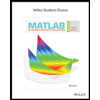 MATLAB: An Introduction with ApplicationsEngineeringISBN:9781119256830Author:Amos GilatPublisher:John Wiley & Sons Inc
MATLAB: An Introduction with ApplicationsEngineeringISBN:9781119256830Author:Amos GilatPublisher:John Wiley & Sons Inc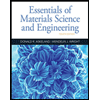 Essentials Of Materials Science And EngineeringEngineeringISBN:9781337385497Author:WRIGHT, Wendelin J.Publisher:Cengage,
Essentials Of Materials Science And EngineeringEngineeringISBN:9781337385497Author:WRIGHT, Wendelin J.Publisher:Cengage,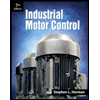 Industrial Motor ControlEngineeringISBN:9781133691808Author:Stephen HermanPublisher:Cengage Learning
Industrial Motor ControlEngineeringISBN:9781133691808Author:Stephen HermanPublisher:Cengage Learning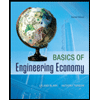 Basics Of Engineering EconomyEngineeringISBN:9780073376356Author:Leland Blank, Anthony TarquinPublisher:MCGRAW-HILL HIGHER EDUCATION
Basics Of Engineering EconomyEngineeringISBN:9780073376356Author:Leland Blank, Anthony TarquinPublisher:MCGRAW-HILL HIGHER EDUCATION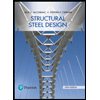 Structural Steel Design (6th Edition)EngineeringISBN:9780134589657Author:Jack C. McCormac, Stephen F. CsernakPublisher:PEARSON
Structural Steel Design (6th Edition)EngineeringISBN:9780134589657Author:Jack C. McCormac, Stephen F. CsernakPublisher:PEARSON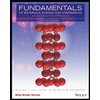 Fundamentals of Materials Science and Engineering...EngineeringISBN:9781119175483Author:William D. Callister Jr., David G. RethwischPublisher:WILEY
Fundamentals of Materials Science and Engineering...EngineeringISBN:9781119175483Author:William D. Callister Jr., David G. RethwischPublisher:WILEY

MATLAB: An Introduction with Applications
Engineering
ISBN:9781119256830
Author:Amos Gilat
Publisher:John Wiley & Sons Inc

Essentials Of Materials Science And Engineering
Engineering
ISBN:9781337385497
Author:WRIGHT, Wendelin J.
Publisher:Cengage,

Industrial Motor Control
Engineering
ISBN:9781133691808
Author:Stephen Herman
Publisher:Cengage Learning

Basics Of Engineering Economy
Engineering
ISBN:9780073376356
Author:Leland Blank, Anthony Tarquin
Publisher:MCGRAW-HILL HIGHER EDUCATION

Structural Steel Design (6th Edition)
Engineering
ISBN:9780134589657
Author:Jack C. McCormac, Stephen F. Csernak
Publisher:PEARSON

Fundamentals of Materials Science and Engineering...
Engineering
ISBN:9781119175483
Author:William D. Callister Jr., David G. Rethwisch
Publisher:WILEY